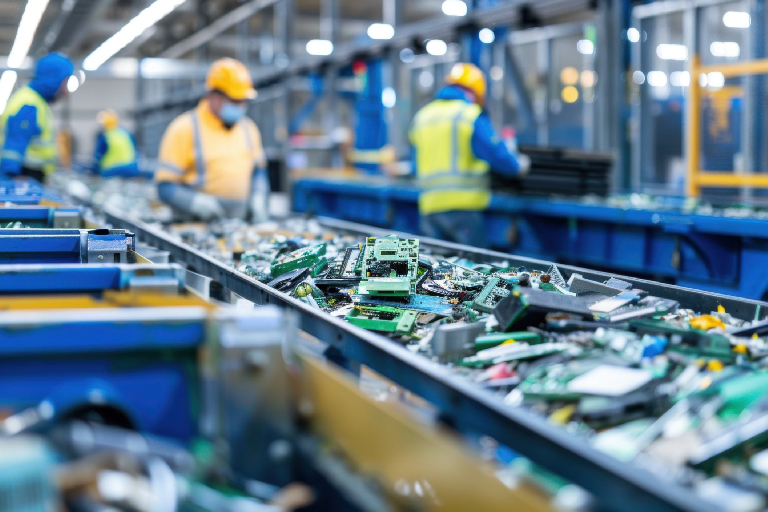Long before sustainability became an industry talking point, Broadnet recognized the need to do things differently. With 17 years of experience in the telecom sector, we understood early on that the traditional “take-make-dispose” model was unsustainable, both environmentally and economically. That foresight positioned Broadnet as a pioneer in embracing circular economy principles: designing systems to reuse, repurpose, and regenerate materials and infrastructure, maximizing value while minimizing waste.
At Broadnet, circularity isn’t a recent development, it’s been part of our DNA since the beginning. Our focus on recycling, refurbishing, and extending the lifecycle of telecom assets has helped us deliver scalable, cost-efficient solutions for clients across Canada and beyond. It’s a strategy that has bolstered our operational resilience, reduced material dependency, and aligned us with procurement standards now being adopted across both public and private sectors.
Why the Circular Economy Matters in Telecom and IT
While some still question whether circular principles apply in telecom and IT, Broadnet has spent nearly two decades proving that they do, and that they work. In a sector heavily reliant on physical infrastructure and energy, we’ve long understood the importance of rethinking how networks are sourced, deployed, maintained, and retired.
Our model emphasizes hardware reuse, modular system design, and the refurbishment of key components. We were early adopters of service-based offerings, such as leasing and managed services, that focus on uptime and flexibility rather than outright ownership. These choices aren’t just eco-conscious; they’re efficient, cost-effective, and better aligned with today’s client expectations.
A Business Model Built for Longevity
Broadnet’s early adoption of circular strategies required a fresh approach to how we build and manage networks. We’ve focused on reducing waste across the board, from minimizing overbuilds to investing in energy-efficient technologies and intelligent monitoring. Our networks are designed for longevity, with scalable, interoperable platforms that evolve with our clients’ needs, whether in public safety, rural broadband, or private industrial deployments.
This unified and forward-thinking approach allows us to avoid the inefficiencies of fragmented systems. Instead, we offer smart, adaptable architectures that reduce duplication, support future upgrades, and enable rapid redeployment.
Ahead of the Curve: By Design
Today, many in the industry are beginning to adopt circular economy principles. Broadnet got there very early. Our long-term commitment to sustainable practices has already helped define our reputation as one of the market’s preeminent leaders. What others see as an emerging trend, we see as business as usual.
As environmental expectations continue to rise, from governments, enterprises, and communities, companies that act now will shape the future. At Broadnet, circularity isn’t just a matter of compliance; it’s central to how we operate, compete, and grow. And after 17 years of building networks that last, we’re more convinced than ever that sustainability is good business.




